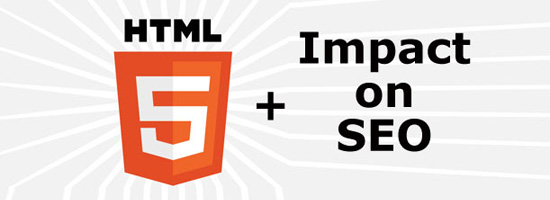HTML 5 is still in the making but for any SEO expert, who tries to look ahead, some knowledge about HTML 5 and how it will impact SEO is not unnecessary information. It is true that the changes and the new concepts in HTML 5 will impact Web developers and designers much more than SEO experts but still it is far from the truth to say that HTML 5 will not mean changes in the Organic SEO policy.
HTML 5 is not very different from HTML 4. One of the basic ideas in the development of HTML 5 was to ensure backward compatibility and because of that HTML 5 is not a complete revamp of the HTML specification. So, if you had worries that you will have to start learning it from scratch, these worries are groundless.
How the changes in HTML 5 will affect SEO?
A new <nav> tag.
Navigation is one of the important aspects for SEO and everything that eases navigation is welcome. The new <nav> tag can be used to identify a collection of links to other pages.
A new <section> tag.
The new <section> tag can be used to identify separate sections on a page, chapter, book. The advantage is that each section can have its separate HTML heading. As with the <article> tag, it can be presumed that search engines will pay more attention to the contents of separate sections. For instance, if the words of a search string are found in one section, this implies higher relevance as compared to when these words are found all across the page or in separate sections.
A new <footer> tag.
The <footer> tag might not be as useful as the <header> one but still it allows to include important information there and it can be used for SEO purposes as well. The <header> and <footer> tags can be used many times on one page i.e. you can have a separate header/footer for each section and this gives really a lot of flexibility.
A new <header> tag.
The new <header> tag (which is different from the head element) is a blessing for SEO experts because it gives a lot of flexibility. The <header> tag is very similar to the <H1> tag but the difference is that it can contain a lot of stuff, such as H1, H2, H3 elements, whole paragraphs of text, and any other kind of info you feel relevant to include.
A new <article> tag.
The new <article> tag is probably the best addition from a SEO point of view. The <article> tag allows to mark separate entries in an online publication, such as a blog or a magazine. It is expected that when articles are marked with the <article> tag, this will make the HTML code cleaner because it will reduce the need to use <div> tags. Also, probably search engines will put more weight on the text inside the <article> tag as compared to the contents on the other parts of the page.
However, once HTML 5 is accepted and put to use, it will be the dominating standard for the years to come and that is why you might want to keep an eye on what other web masters are doing, just to make sure that you will not miss the moment when HTML 5 becomes the effective standard.

